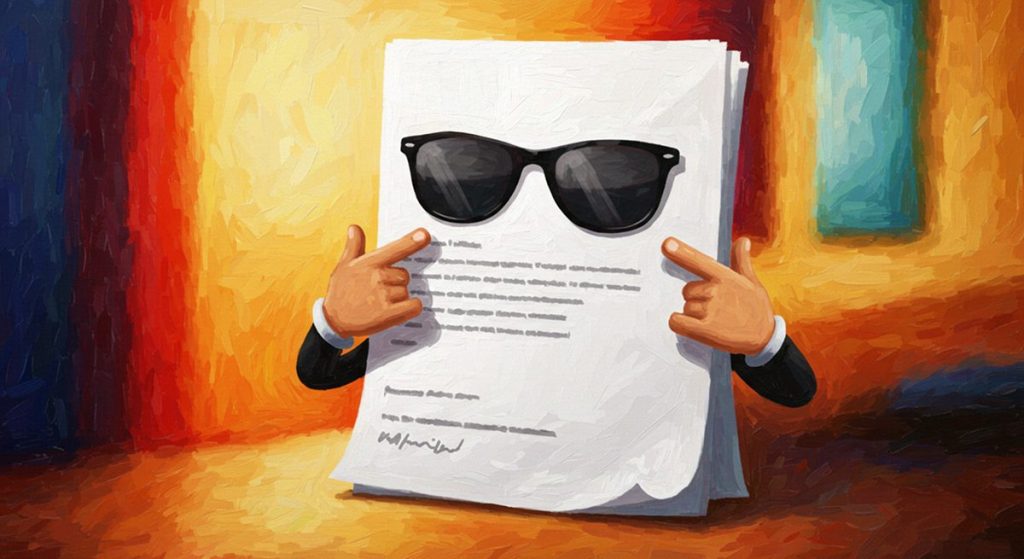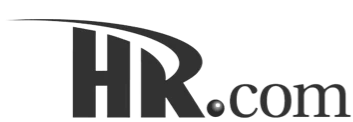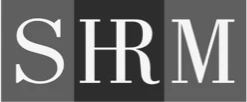Career GuidanceInterview Preparation
How to Answer Weaknesses During Interviews: Crafting the Perfect Response to Impress Hiring Managers
In a job interview, most interviewers will eventually ask about your biggest weakness. Treat that moment as a chance to give a clear answer that shows self awareness, sound judgment, and a practical plan. Your answer does not need to paint you as flawless; it should name a real weakness, show brief impact, and explain the fix in a way that fits the job requirements.
This interview question endures because structured interviews, used with consistent scoring and planned probes, predict on-the-job results more reliably than casual conversations. Public guidance and recent academic discussion support that practice and explain why organizations still use it. There is also a gap to address: people often think they are self aware, yet research suggests only a small share truly are.
A direct answer, backed by evidence, helps you stand out to potential employers who value thoughtful strengths and weaknesses discussions, including personal weaknesses.
Why This Job Interview Question Matters
The greatest weakness prompt sits in the middle of strengths and weaknesses because it links character to performance. A thoughtful answer shows you are cognizant, practical, and focused on outcomes the role needs. It also allows potential employers to compare candidates with the same interview question, follow-ups, and ratings. That consistency improves signal and reduces bias, which is why disciplined processes keep this question.
If only a small share of people are truly self reflective, the question becomes a useful screen. Candidates who connect insight to business impact, and who present a tested plan, tend to rise. For prepared candidates, that awareness gap turns into an edge, especially when their answer reads as calm, specific, and credible.
A Clear Three-Part Structure to Give a Good Answer
Keep your answer simple and direct. A smooth shift from what interviewers seek into how you respond shows you understand the process and can meet it with clear thinking.
1. Name One Specific Weakness
Choose a weakness rather than a vague label. Pick something real but not central to the role. Focus on a particular area you can improve quickly and credibly. If you aim for a commercial role, you might say you were slow to adopt a new dashboard at your previous job and explain how you closed the gap. If you aim for an analyst role, you could admit you hesitated to ask questions in meetings, explain why that mattered, and show how you changed. This respects the job interview and sets up a strong answer. It also signals that you are self-reflective without sounding defensive. A good answer here shows you understand the job description and where your skill set is still growing.
2. Show Impact and Learning
Give one or two lines about impact. Explain how the weakness touched your professional life, your work, or an entire team. A sentence like “In my last job I missed deadlines on a cross-team report, which slowed decisions” is enough. You have named a real weakness, acknowledged negative impact, and set up the change. Phrasing it as “Here is what I learned from that experience” shows ownership and helps your answer feel steady and honest.
3. Explain How You’re Fixing It
Describe the steps you are actively working. Show manageable steps, any additional training you completed, and realistic goals you set. Mention time management skills like a weekly planning routine, interim checkpoints, and a simple way to prioritize work tasks. For communication skills, describe coaching, focused practice, or a short course. If delegation is part of the fix, say how you now delegate tasks so priorities move on time.
These details tell a hiring team your answer is real. Using framing language such as “Here is what I changed” and “Here is the result” keeps your answer clear. If the weakness sits on the edge of your role, explain how the plan supports personal growth and a healthier work style. This shows a growth mindset and that you are self motivated. When a weakness is coachable and measurable, your answer carries extra weight.
Six Ready-to-Use Example Responses to the “Greatest Weakness” Interview Question
Use these models and keep each answer to about a minute. Each follows the same arc: name the weakness, show impact, explain the fix, and close with a result.
1. Time Management and Missed Deadlines
“In a previous role, I delivered two cross-team reports late because I over-committed and tried to perfect every task. I now plan my week every Friday, build interim checkpoints, and confirm hand-offs early. My on-time rate moved from eighty to ninety-eight percent last quarter, and reviews mention fewer rushes. I also learned to handle my workload effectively during peak weeks.” This answer works because the steps are simple and measurable, and the result is clear.
2. Public speaking and presentation skills
“My greatest weakness has been public speaking. It limited my presentation skills in team meetings and made client updates harder. I joined a speaking class, present monthly, and record short run-throughs. After each talk I ask for one point of constructive feedback. My updates are clearer, and I now volunteer for external demos. Because public speaking is a common weakness, I treat progress here as steady practice.” This answer shows a plan that fits daily work and builds communication skills.
3. Being Hyper Critical
“I used to be overly critical and self critical of my own work. I rewrote sections that were already fine, which slowed delivery. I now set a review limit and ask a colleague for focused input. Turnarounds are faster, and quality remains high without the spiral of self criticism. This answer shows I can keep standards high while moving the project forward.”
4. Gap in a Particular Software or Technical Skills
“My biggest weakness last year was a gap in a particular software our clients use. It was not central to my role, but it slowed me. I completed additional training, paired with a peer coach, and used the tool on a pilot. My skill set is now strong enough for daily work, and I block an hour on Fridays to practice new features.” This answer shows the weakness sits outside core duties and that the fix sticks.
5. Work Life Balance
“I took on too much after hours, which blurred personal life and work and caused slow mornings. I set a shutdown time, batch email, and moved deep work earlier in the day. Energy and output are steadier, and my manager noted cleaner hand-offs. I still flex during peak weeks, but I plan it and protect recovery.” This answer links habits to results and supports good work life balance.
6. Trouble Working with Certain Personalities
“My greatest weakness used to be working with certain personalities. I pushed my style and missed chances to align. I now start with clarifying questions, state options, and tie decisions to the bigger picture so we agree on outcomes. That shift improved cross-team work and client conversations because we focus on results, not preferences. Adapting to different personality types is now part of how I prepare.” This answer reframes the issue as coachable behavior change.
Handling What the Interviewer Asks Next
Expect two or three quick follow-ups after your answer. These questions test whether your answer is real, whether it fits the role, and whether you handle pressure. When the interviewer asks for evidence, they want proof that your plan works. Offer one before-and-after number with brief context for example: on-time delivery moving from seventy to ninety-five percent over a quarter, review cycles dropping from three passes to one, or client survey scores rising after meetings. If you lack perfect data, cite a reasonable marker, such as fewer rework rounds or a brief manager note from your previous role. Your answer should make it easy for them to see change.
When the interviewer enquires about how your plan fits this role, connect your answer to the team’s tools, deadlines, and hand-offs. If your weakness was time management, tie your checkpoints to the reporting rhythm. If your weakness was speaking to groups, explain how your practice routine will make client updates clearer and faster. This answer shows you think about the job description and how your plan supports the team.
If the interviewer asks about setbacks, a second weakness, or what your manager would say, keep the answer steady. Share one bump and how you corrected it without blame. If they ask for another weakness, choose a smaller, non-core item and name one step you are actively working, such as taking more calculated risks by testing a small pilot before a broad rollout. If they ask what your manager would say, quote one short line from a review and pair it with the action you took. By keeping each answer short and specific, you demonstrate self awareness and self improvement.
Mistakes to Avoid
Mistake 1: Offering a Fake Weakness
A fake weakness sounds like a slogan: “I care too much about all my tasks,” or “I am too detail oriented.” Interviewers have heard these lines many times, and they do not show real self awareness. This kind of answer makes you sound rehearsed and invites sharper follow-ups. Give a real weakness that is safe for the role, then offer an answer with one moment of impact and one result. For example, admit you once delivered a cross-team report late, then show the planning system you now use to meet deadlines.
Mistake 2: Choosing a Weakness That Conflicts with the Role
Some weaknesses are deal breakers for a specific job. If accuracy and compliance are central, do not admit to frequent number slips. If regular client meetings drive the week, do not say you avoid speaking up. Picking a role-critical weakness makes it hard to accept any answer you give, even if the plan sounds strong. Choose a specific weaknesses area at the edge of the job. A gap in a particular software is acceptable if you can close it fast with a short course. A mild hesitation with speaking to groups is manageable if most work is written and you are already improving. Make sure your answer shows that your core skill set fits and that the team will not pay a price while you grow.
Mistake 3: Skipping the Plan and Asking the Panel to “Trust You”
Some candidates describe a weakness and then stop, trusting that intent will carry the day. That puts the work on the interviewer and weakens your answer. Bring a simple plan you are actively working. Explain the steps, such as weekly planning, interim checkpoints, peer reviews, and how you now delegate tasks during peak times. Add one small metric that shows progress. This kind of answer signals ownership and makes it easy to see improvement.
Mistake 4: Oversharing Personal Issues
Deep personal details distract from the job and shift attention away from results. They also invite questions you may not want to answer. Keep the story inside work. If you want to show better work life balance, describe the actions that helped you produce higher quality work, such as a set shutdown time or earlier focus blocks. You are still being open, but your answer stays tied to performance and to what potential employers need from the role.
Conclusion: Ready For The Question
Treat the greatest weakness prompt like a short business case. Your goal is a good answer that shows self awareness, a real weakness, and credible progress that fits the role. Choose a specific area that will not block daily work, name one concrete moment, and walk through the plan including time management habits, the ability to delegate tasks, and targeted learning as needed.
When the interviewer asks for more, give an answer with one metric, link it to the role, and explain your next step. This approach works from a first job to senior levels because it scales with scope and results. Use it to craft the best weaknesses to discuss, present a steady answer under questions, and show that you are a team player ready for the work. That is the kind of answer hiring managers remember.






















